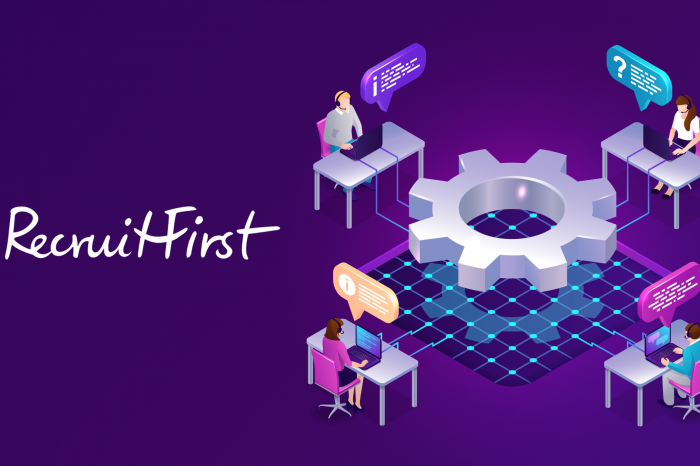Employers: Salary Trends & Market Intelligence, IT & Telco Industry – Singapore

Industry Insights
Already at the forefront of change, the ITT sector has risen to assume the role of pioneer when it comes to addressing the pain points brought on by the COVID pandemic. The industry has developed rapidly, and we see IT creep into other functions due to the nature of digitalisation as organisations realise the need to upgrade their processes.
Automation-related roles that aim to improve business workflow, reduce manpower, and improve cost savings are largely popular and projected to remain crucial even in a post-COVID world. In the era of Big Data, data analysts and scientists are also needed to make sense of the human behaviour patterns that can be gleaned from collected data.
Flexibility and change are two keywords that are increasingly relevant in today’s market. This is seen in the way new roles are created to cater to the shifts in global and local IT needs, as well as in the structure of roles offered.
While companies and job seekers have come to realise the benefit of contract, project-based, and temporary assignment, these roles are still not easily filled, due to the traditional preference for permanent positions, which were the norm until a few years ago. However, the pros to contractual work cannot be ignored: they provide job scope and payroll flexibility to the organization, and give the job seeker opportunities to explore different functions and responsibilities in short stints so that they can build on their skills and network.
Attracting the Talent You Need
It’s very much a job seeker’s world, in that IT skills are prized, and companies are willing to pay for these skills. Demand for local talent has increased due to the tightening of foreign talent hiring and the urgency with which companies are jumping on board the digitalisation bandwagon. This explosion in demand for local talent has brought about an increase in the starting salaries of fresh graduates. While entry-level applicants once expected a salary in the $3,500 range, this number has increased to become as high as $5,000 per month.
However, top candidates gravitate towards the same few companies, who are able to offer prestige on top of competitive salaries and benefits. This makes it hard for smaller companies who require the talent but might not have as much to offer.
Such organisations must turn to different ways of attracting talent, such as making use of government programs, or committing to training new hires so that they become proficient in their specialised field.
Relooking the criteria on which hiring is based will help to expand the pool of candidates. It would be helpful to not only shortlist fresh graduates from the standard list of tertiary schools, but also look at the unique selling points of all applicants, such as whether they took on external courses, engaged in IT-related activities outside of the school or internship setting, or if they participated in the creation of their own IT software or applications. It would also benefit companies to expand the search to encompass not only recent graduates but also qualified mid-career candidates looking to switch industries and who have obtained the necessary skills and certifications to be an asset to the organisation.
TALENT ATTRACTION STRATEGIES
- Speed: Fast feedback and shortened interview process to express interest in candidate
- Salary: Providing competitive starting salaries, along with steady and significant increment
- Skills: Willingness to hire candidates with no experience but who have the prerequisite skill sets and are willing to learn
- Sense: A strong organizational mission and purpose helps attract talent as they want to be part of something bigger
TALENT RETENTION STRATEGIES
- Belief: Employees want to be trusted that they can do their work without being constantly supervised. They favour flexible working hours
- Benefits: Unlimited leave, free food, stock options
- Backing: Sponsorships for courses, further studies
The Future of Work
The development of technology has seen the eradication of roles due to automation. It has also resulted in the creation of new roles and skills that capitalise on this new technology. Hybrid roles, in which technology is paired with another operational function, are prevalent in today’s world, as seen in how many roles have come to encompass data analytics. HR, Marketing and Finance-related roles, although not strictly IT-related, have begun to include analytics in their job descriptions. It is imperative that companies train their existing staff in these areas while looking to bring on board new employees who are willing to expand their knowledge beyond their original job scopes.
With the remote or hybrid work model, employees must pay close attention and be proactive in the understanding of workplace dynamics. A refined sixth sense has to be developed in order to discern if potential candidates are really suited to the job and to the company.
Contractual positions have seen a rise in popularity, due to the flexibility they award employers in terms of work duration and job scope. These will become the norm, especially for start-ups or new departments, in order to manage long-term risk exposure. It is important to address concerns from employees regarding the company’s intention when hiring contract staff, as well as the plans that the company has for the role. If these questions are answered right from the outset, outstanding job candidates who would have initially preferred a full-time role can be persuaded to take on contract positions.
Work with a Recruiter
Hiring in the ITT sector is an exciting process that requires up-to-date industry knowledge, a keen sixth sense, and the resolve to scour the market for the best-suited talents. With a finger on the pulse of market and socioeconomic changes, recruiters are able to consult with clients once they sense a shift in the scene and help put in place measures that will help organizations brave through change.
Salary Guide
| JOB TITLE | YEAR OF INDUSTRY EXPERIENCE | SALARY |
|---|---|---|
| Data Engineer | Min. 1 year | $48,000 – $60,000 p.a. |
| DevOps Engineer | Min. 2-5 years | $84,000 – $120,000 p.a. |
| Security Engineer | Min. 2 years | $48,000 – $60,000 p.a. |
| System Engineer | 3-5 | $48,000 – $72,000 p.a. |
| Big Data Engineer | Fresh | $4,500 – 5,000 |
| Backend Engineer | Min. 2 years | $4,800 – $7,000 |
| Cloud Engineer | Min. 1 year | $3,500 – $5,500 |
| Senior Cloud Engineer | Min. 3 years | $5,000 – $8,000 |
| Data Centre Engineer | Min. 2-3 years | $3,000- $7,000 |
| IT Project Manager | Min. 3 years | With PMP/CITPM, min. at least $5,000 and $8,000 respectively. Annual package depends on individual company benefits |
| Software Engineer | Min. 1-2 years | $3,000 – $5,600 |
| Senior Software Engineer | Min. 3-4 years | $5,000 – $7,300 |
| Infrastructure Specialist | Min. 2 years | $2,900 – $6,400 |
| Database Administrator | Min. 2 years | $4,000- $7,500 |
| Data Scientist | Min. 2 years | Wide range, up to $10,000+ |
| Web Developer | Min. 1 year | $3,800 – $7,500 |
| Systems Analyst | Min. 1 year | $3,500 – $6,000 |
| Information Security Analyst | Min. 2 years | $3,600 – $5,600 |
| Site Reliability Engineer | Min. 2-5 years | Wide range, up to $14,000 |
| Machine Learning Engineer | Min. 2 years | Wide range, up to $10,000+ |




